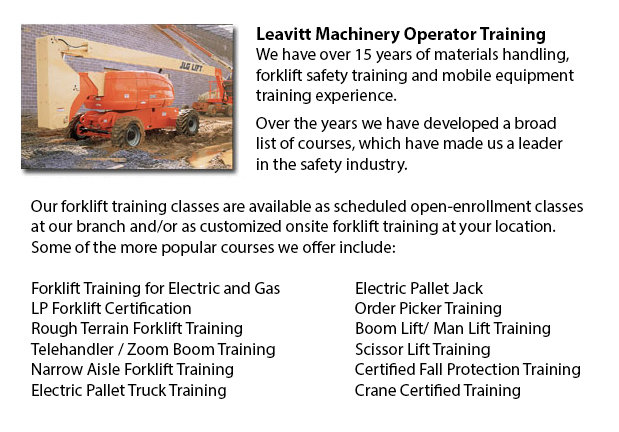
Aerial Boom Lift Ticket Oakville - Aerial platform lifts can be used to accomplish several different tasks executed in hard to reach aerial places. A few of the odd jobs associated with this type of lift include performing regular preservation on structures with prominent ceilings, repairing telephone and utility lines, lifting heavy shelving units, and trimming tree branches. A ladder might also be used for some of the aforementioned tasks, although aerial platform lifts offer more security and stability when correctly used.
There are many designs of aerial lifts accessible on the market depending on what the task needed involves. Painters often use scissor aerial lifts for example, which are grouped as mobile scaffolding, of use in painting trim and reaching the 2nd story and above on buildings. The scissor aerial platform lifts use criss-cross braces to stretch and enlarge upwards. There is a platform attached to the top of the braces that rises simultaneously as the criss-cross braces elevate.
Bucket trucks and cherry pickers are a different kind of aerial lift. They contain a bucket platform on top of a long arm. As this arm unfolds, the attached platform rises. Platform lifts utilize a pronged arm that rises upwards as the lever is moved. Boom lift trucks have a hydraulic arm which extends outward and raises the platform. Every one of these aerial lift trucks call for special training to operate.
Through the Occupational Safety & Health Association, also labeled OSHA, instruction programs are offered to help make certain the workforce meet occupational values for safety, system operation, inspection and maintenance and machine load capacities. Employees receive certification upon completion of the classes and only OSHA certified personnel should drive aerial hoists. The Occupational Safety & Health Organization has formed guidelines to maintain safety and prevent injury while utilizing aerial lifts. Common sense rules such as not utilizing this apparatus to give rides and ensuring all tires on aerial hoists are braced so as to hinder machine tipping are mentioned within the rules.
Sadly, statistics reveal that more than 20 aerial hoist operators pass away each year while operating and nearly ten percent of those are commercial painters. The bulk of these incidents were brought on by inappropriate tie bracing, for that reason several of these may well have been prevented. Operators should make certain that all wheels are locked and braces as a critical safety precaution to stop the device from toppling over.
Marking the neighbouring area with visible markers need to be utilized to protect would-be passers-by so that they do not come near the lift. Moreover, markings must be placed at about 10 feet of clearance amid any power cables and the aerial lift. Lift operators should at all times be properly harnessed to the hoist while up in the air.
-
Order Picker License Oakville
Order Picker License Oakville - Order preparation operation or order picking as it is more normally known is a method used within warehouse operations and consists of employees called order pickers. The order picker's task is to collect and take arti... More -
Forklift Operator Certification Oakville
Forklift Operator Certification Oakville - Forklift operator certification is normally needed for personnel working within industrial, warehouse or construction setting to guarantee the safe utilization of forklifts. Workplace training need to follow... More -
Scissor Lift Certification Oakville
Scissor Lift Certification Oakville - A lot of worksites and tradespeople like iron workers, welders and masons utilize scissor lift platforms to help them reach elevated work areas. The utilization of a scissor lift is usually secondary to their tra... More -
Forklift Training Courses Oakville
Forklift Training Courses Oakville - When forklift operator safety training is customized for illiteracy, training time is reduced by 50%. Train the trainer, forklift training certification and lift-truck operator driver safety training evaluation pr... More -
Manlift Training Oakville
Manlift Training Oakville - There are numerous manlift training programs which offer a review of the manlift machinery. The practicum portion of the training is one more vital portion of the course. In this section the trainee has chance to demonstra... More -
Boom Lift License Oakville
Boom Lift License Oakville - To operate an aerial boom lift, operators should be licensed through training that can be obtained utilizing both classroom sessions and practical training and by attaining a boom lift license. Instruction should be given... More -
Crane / Overhead Crane / Self-Erect Crane / Truck Mounted Crane / Hydraulic Cranes Training in Oakville
Bridge cranes or likewise called overhead cranes are actually a type of industrial material handling crane using a line and hook mechanism that runs on a horizontal beam running along two widely separated rails. Several overhead cranes could be seen... More -
Telehandler Training in Oakville
Telescopic handlers normally called telehandlers for short, are an extremely popular piece of heavy construction machinery. They are widely utilized in the construction and agricultural trades. These machines have maximum reaching ability and could g... More

Forklift Training Oakville
TOLL FREE: 1-888-254-6157
Oakville, Ontario
forklifttrainingoakville.com
Email Us
About Us


